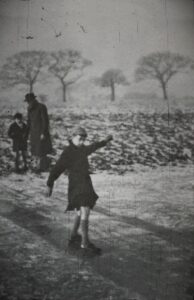Sled ice hockey, also known as para ice hockey, is a dynamic and thrilling sport that provides individuals with physical disabilities the opportunity to showcase their skills on the ice. The game follows a set of rules that ensure fair play and create an environment where athletes can compete at the highest level. In this article, we will explore the key rules of sled ice hockey, shedding light on the regulations that govern this fast-paced and exciting adaptation of traditional ice hockey.
Equipment:
– Sleds: Players use specially designed sleds mounted on skate blades to navigate the ice.
– Sticks: Athletes use two sticks with metal picks on one end to propel themselves and handle the puck.
– Puck: A standard ice hockey puck is used, but players may attach picks to their sticks for better control.
Team Composition:
– Each team consists of six players, including the goaltender.
– Players must have a lower limb disability to participate.
Game Duration:
– A standard sled ice hockey game is divided into three periods.
– Each period typically lasts 15 minutes, but game durations may vary based on competition and league rules.
Penalties:
– Penalties are enforced for rule violations, similar to traditional ice hockey.
– Players serving penalties must stay in the penalty box for the designated time.
– The opposing team may gain a one-player advantage during a power play.
Offsides:
– Similar to traditional hockey, sled ice hockey has an offsides rule.
– The attacking team must not enter the offensive zone before the puck.
Icing:
– Icing is called when a player shoots the puck from behind the center red line to the opponent’s goal line.
– Unlike traditional hockey, the team that iced the puck is not penalized; instead, a faceoff occurs in the defending zone.
Faceoffs:
– Faceoffs are used to restart play after stoppages.
– The two opposing players face each other, and the referee drops the puck between their sticks.
Goaltending:
– The goaltender plays a crucial role in sled ice hockey, and they must have a physical disability that affects their lower limbs.
– Goaltenders use specialized sleds and have adapted equipment to make saves.
Scoring:
– Goals are scored when the puck crosses the goal line.
– The team with the most goals at the end of the game wins.
Overtime and Shootouts:
– In the event of a tied game, some competitions may use overtime and shootouts to determine a winner.
Contact Rules:
– Physical contact is an integral part of sled ice hockey, but certain checks are penalized.
– Checking from behind, high-sticking, and other dangerous plays result in penalties.
Sled ice hockey is a sport that not only provides individuals with physical disabilities the opportunity to engage in competitive athletics but also showcases the resilience and skill of its participants. The rules governing the game ensure a fair and exciting competition, highlighting the adaptability of the sport while maintaining the core principles of traditional ice hockey. As sled ice hockey continues to grow in popularity, its rules will likely evolve to further enhance the sport’s accessibility and competitiveness.


